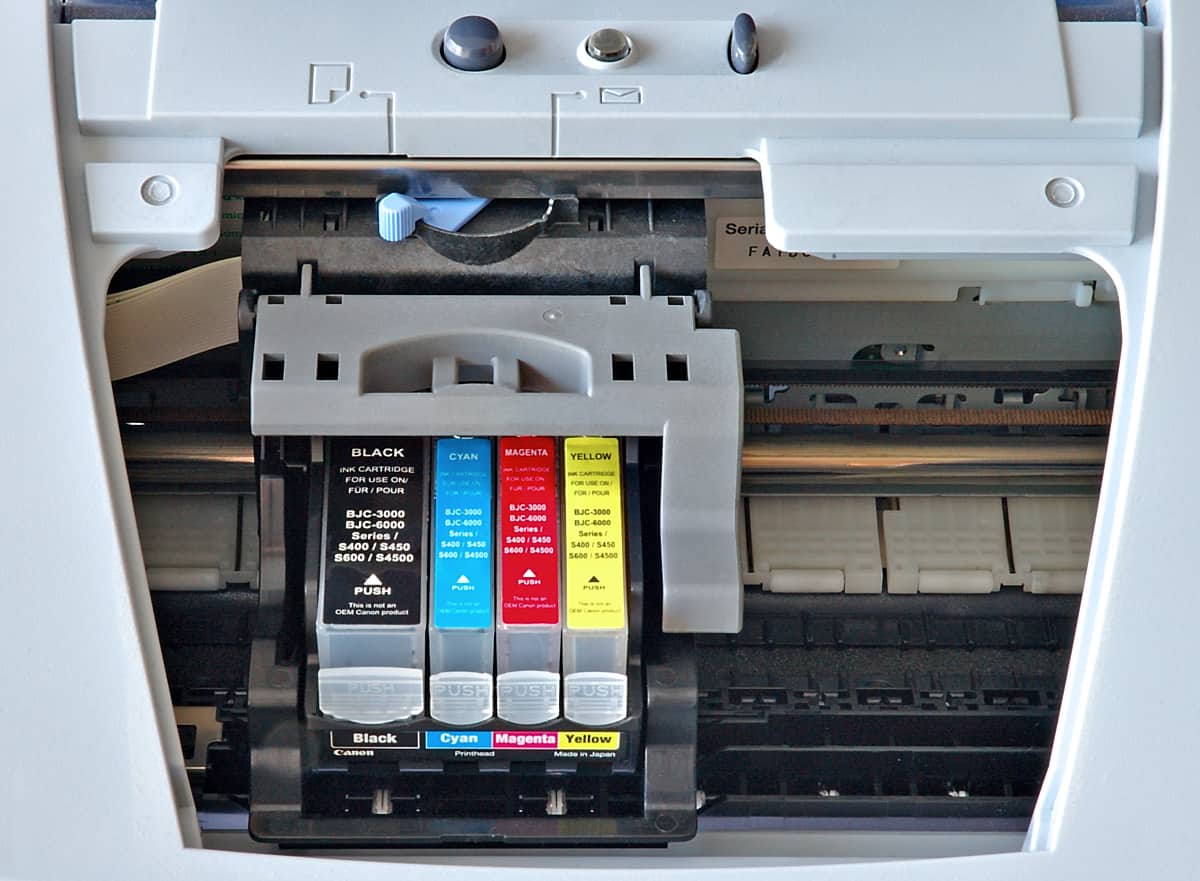Yes, printer ink does expire. This applies to both inkjet and toner cartridges, although toner cartridges work well past their expiration dates. While it might seem frustrating to replace unused ink, understanding why it expires is important.
Why Does Ink Have an Expiration Date?
Manufacturers include expiration dates on their cartridges for several reasons:
- Ink Quality: The chemical composition of ink can gradually change over time. Pigments may settle, dyes may fade, and the overall consistency can thicken. This leads to potential print quality problems like clogging, streaking, and color inconsistencies.
- Printer Health: Expired ink won’t necessarily damage your printer, but using it can increase the risk of clogs in the print head. Fixing clogs can be a hassle, and severe cases could require expensive repairs.
- Warranty: Most manufacturers only guarantee their ink within a certain time frame from the date of manufacture. The expiration date helps them manage potential warranty issues.
How Long Does Printer Ink Last?
The lifespan of your ink cartridges depends on their type and how you store them:
| Ink Type | Typical Shelf Life |
|---|---|
| OEM Inkjet Cartridges (Original Brand) | About 2 years |
| Compatible Inkjet Cartridges | Up to 3 years |
| Toner Cartridges | Up to 2 years |
Important Note: These are general guidelines. Always check the specific expiration date printed on your ink cartridge.
Tips to Extend the Life of Your Ink
- Store Properly: Keep ink cartridges in a cool, dry place away from direct sunlight and extreme temperatures.
- Sealed Packaging: Keep cartridges in their original packaging until ready for use. Once opened, use ink as soon as possible.
- Regular Use: If possible, print something at least once a week to prevent your printhead from drying out.
Can I Use Expired Ink?
Technically, you may get away with using slightly expired ink. However, it’s generally not recommended as the quality and consistency will be compromised, and you risk clogging your printer.
Understanding Printer Ink and Expiration
When it comes to maintaining your printer and ensuring the best quality prints, understanding the shelf life of printer ink is crucial.
The Basics of Printer Ink
Printer ink is a complex liquid crafted to deliver vibrant colors and clear text on various types of paper. Its formulation is designed for optimal performance within a specific timeframe. Manufacturers include expiration dates on ink cartridges to indicate when the ink may start to degrade in quality.
Ink Cartridge Lifespan
The shelf life of an ink cartridge typically ranges from 18 to 24 months when unopened and stored under the right conditions. Once installed, a cartridge’s functional lifespan can vary but usually lasts until the ink is depleted, provided it is used regularly and kept in ideal conditions.
Signs of Expired Ink
Using ink past its expiration date can lead to poor print quality. Look out for:
- Faded colors
- Streaky or uneven prints
- Clogged printer nozzles
Expired printer ink can also contribute to maintenance issues, potentially damaging the printer itself. It’s best to use ink before its expiration to prevent these problems.
Storage and Handling to Maximize Ink Longevity
Making printer ink last longer comes down to how it’s stored and handled. Attention to these details can prevent ink from drying out or spoiling too soon.
Proper Storage Conditions
Printer ink cartridges should be kept in a cool, dry place, away from direct sunlight and heat sources. Ideally, the storage area should maintain an ambient temperature to avoid ink deterioration. It’s recommended to store ink cartridges in their sealed packaging to limit exposure to air, which can dry out the ink. If the original packaging is not available, a vacuum-packed bag is a good alternative to seal out air and maintain ink quality. Storing cartridges in an upright position can also help in preventing leaks and ensuring consistency in print quality.
Handling Practices for Ink Cartridges
When handling ink cartridges, one should:
- Avoid touching the nozzle or circuitry to prevent contamination or damage.
- Use cartridges regularly to prevent the ink from settling and potentially clogging the print heads.
Proper handling includes installing cartridges promptly after removing the protective seal. If a cartridge must be temporarily removed from the printer, place it nozzle-side up in a secure place away from dust and direct light. If possible, reseal the cartridge to minimize air exposure.
Impacts and Prevention of Ink Expiry
The shelf life of printer ink is crucial for maintaining both print quality and the health of your printer. Expired ink can lead to poor performance and even damage the equipment.
Effects of Expired Ink on Printers
The use of expired ink often results in a noticeable decline in print quality. Clogging can occur within the print head due to sedimentation or thickening of the ink, making it difficult for the ink to flow properly through the ink-delivery system. This not only leads to streaks and gaps in printed documents but can force the printer to work harder, potentially causing damage to the system over time. Printer cartridges that have surpassed their expiration date tend to produce colors inaccurately, which can be especially problematic for tasks requiring precision.
Preventive Measures
To avoid the issues linked with expired ink, manufacturers often suggest specific storage guidelines. Below are steps to help prevent the expiration and deterioration of printer ink cartridges:
- Store cartridges in a cool, dry place away from direct sunlight.
- Keep cartridges sealed in their original packaging until use.
- Use ink within a year of installation in the printer to ensure quality.
By adhering to these practices, the longevity and effectiveness of your printing supplies can be secured, safeguarding your printer’s performance for future use.
Frequently Asked Questions
Printer ink does have an expiration date, and knowing how to navigate this can save both your prints and printer from potential issues. Here’s what you need to know.
How long can you use printer ink after the expiration date?
Using ink just past the expiration date might not immediately cause problems, but ink quality starts to degrade once it expires. Expect changes in print quality if you use ink significantly beyond this date.
What are the consequences of using expired ink cartridges in a printer?
Expired cartridges can lead to clogged print nozzles, streaks on prints, and faded colors. Additionally, you could harm the printer itself, requiring costly repairs.
How can I prevent my printer ink from drying out when not in use?
Keep your ink cartridges in a cool, dark place and make sure they are properly sealed. Use your printer regularly, as frequent use can prevent ink from drying out.
Are there any differences in shelf life among various printer ink brands?
Yes, different brands might have varied shelf lives based on their formulations. Dye-based inks usually last about 1.5 to 2 years, while pigment-based inks can last up to 3 years if stored correctly.
Is it safe to use an unopened printer ink cartridge past its expiration date?
While it may be safe, it’s not recommended as the ink quality could be compromised. Check for signs like sediment or strange smells before using past-date cartridges.
How often should unused printer ink cartridges be replaced to ensure optimal performance?
It’s best to replace ink cartridges within two years of installation to maintain print quality. Make sure to replace cartridges with expired ink to keep your prints crisp and your printer running smoothly.







